Wind
Heather Broman
Energy Storage
Accure Battery Intelligence
Wind
Dr. Sandeep Gupta

Renew Home, North America's largest residential virtual power plant (VPP), has launched out of the combination of Google's Nest Renew service and OhmConnect. The new company brings together millions of customers across the nation, helping to stabilize the grid and to reduce home energy costs.
Renew already controls nearly 3GW of electrical energy use, and is planning to expand to 50GW by 2030 – approximately 25% of the total VPP growth recently projected by the U.S. Department of Energy (DOE). DOE projects that by tripling the scale of VPPs, we could meet 10-20% of peak electricity demand by 2030 – which would avoid $10 billion in grid costs.
Backed by a $100M investment from majority owner Sidewalk Infrastructure Partners (SIP), Renew Home will transform residential energy by enabling millions of homes across the country to collectively reduce and shift their energy use.
"The marriage of Nest's innovative approach to managing energy use in the home with OhmConnect's customer-focused grid services platform will be transformational," said Renew Home CEO Ben Brown. "With our industry-leading partners, Renew Home will be able to coordinate the home energy use of millions of customers to help catapult us into a 100% clean energy future."
Renew Home is already working with the Google Home APIs as a platform provider of integrations to control devices and energy use in millions of homes. Renew Home also integrates with dozens of additional devices and appliances in the home - including LG, Honeywell, SunPower, Sense, and others - and will support demand response and VPP programs with more than 100 utilities.
"This is a pivotal moment for virtual power plants," said Alan Machuga, CTO of Rheem. "We are excited to partner with Renew Home to help customers save money and energy – while supporting the grid. As a leading manufacturer of HVAC and Water Heating products, Rheem uniquely brings both potential for energy savings and energy storage, to which water heaters play a critical role."
According to the DOE, VPPs are aggregations of distributed energy resources such as rooftop solar with behind-the-meter batteries, electric vehicles and chargers, electric water heaters, smart buildings and their controls, and flexible commercial and industrial loads that can balance electricity demand and supply and provide utility-scale and utility-grade grid services like a traditional power plant.
Renew Home | https://www.renewhome.com/

NEMA Director of Government Relations Peter Ferrell issued the following statement in response to the Department of Energy’s (DOE) release of potential National Interest Electric Transmission Corridors (NIETC) and the opening of a 45-day public comment period on the potential NIETCs.
“NEMA is pleased to see DOE’s initial NIETC list includes the use of utility and highway rights-of-way to expedite transmission development. Rights-of-way allow developers to use previously disturbed brownfields which have already undergone environmental assessments and issued impact statements, shaving months or years off the permitting process. NEMA encourages DOE to go further and include other rights-of-way corridors in its designations, including railroads, for the greatest impact. Nonetheless, this is a positive step from DOE to increase capacity between interconnections and further electrification efforts in the U.S.
“As we emphasized in comments through the Rail Electrification Council to DOE last year, NEMA supports processes that responsibly accelerate transmission development through improved permitting. These potential NIETCs will advance transmission projects and their societal benefits by providing developers with greater procedural certainty, particularly through FERC’s backstop citing authority. We look forward to working with DOE and the Grid Deployment Office to further strengthen and build a resilient, secure grid that delivers an electrified future for all Americans.”
National Electrical Manufacturers Association | www.nema.org
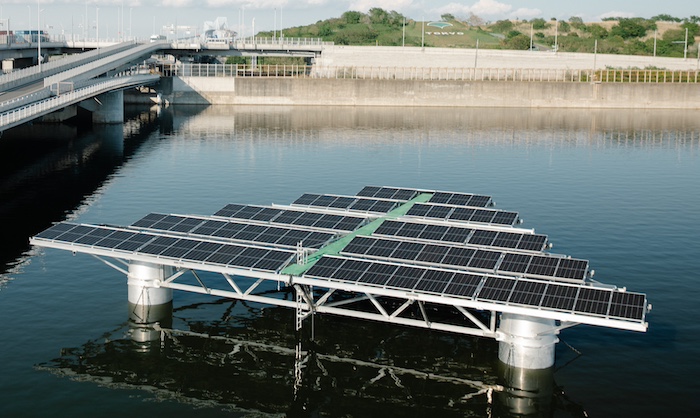
Tokyu Land Corporation (Head Office: Shibuya-ku, Tokyo; President: Hiroaki Hoshino) and SolarDuck B.V. (“SolarDuck”, Head Office: Rotterdam, the Netherlands; CEO: Koen Burgers), in collaboration with Kyocera Communication Systems Corporation, have completed the installation of Japan's first offshore floating solar photovoltaic (OFPV) power plant on the sea surface under the Tokyo Bay eSG Project (the "Project"), an initiative of the Tokyo Metropolitan Government's Policy Planning Bureau.
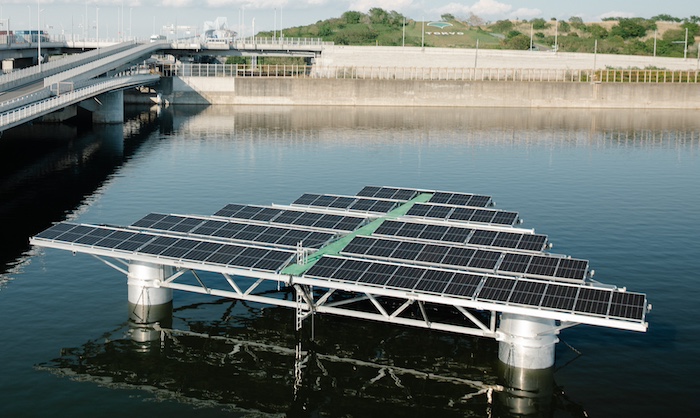
This project is a demonstration project by the Tokyo Metropolitan Government that aims to realize the world's most advanced energy generation and transmission from the Tokyo Bay Area. SolarDuck, together with Everblue Technologies, Inc. were selected in November 2022 in the field of "cutting-edge renewable energy" and have been working on the demonstration. Over the course of FY2024, the two companies will conduct demonstrations of power generation using OFPV power generation facilities, storage of electricity in batteries on the ground, and transportation of the storage batteries.
The renewable energy generated will be used to power Open Street Corporation's state-of-the-art electric mobility vehicles and to power and navigate an electric boat. In addition, the company plans to consider the use of renewable energy for future events in the Takeshiba area of the Tokyo Bay area. In addition to aiming for the practical application of Japan's first OFPV power plant, " the demonstration test of local production for local consumption of energy centered on the Tokyo Bay area will contribute to the study of urban models that can be deployed in other parts of Japan and abroad.
Outline of the Demonstration
Renewable energy generated by the offshore solar power generation facility (approx. 30m x 26m x 6m) installed in the central breakwater area will be stored in storage batteries installed on land. The energy will be transferred to mobile batteries as needed to power events and electric mobility vehicles in the Takeshiba area and other bay areas.
While the issue of energy supply and demand has been discussed recently, Tokyo, a major energy consumption area, is dependent on power transmission from the suburbs. If the generation and consumption of renewable energy in the Bay Area can be achieved, we can expect the realization of an urban model based on local production for local consumption that is unique to the Tokyo Bay Area, as well as its future expansion to other parts of Japan and abroad.
SolarDuck | https://solarduck.tech/
Tokyu Land Holdings | https://www.tokyu-land.co.jp/english/
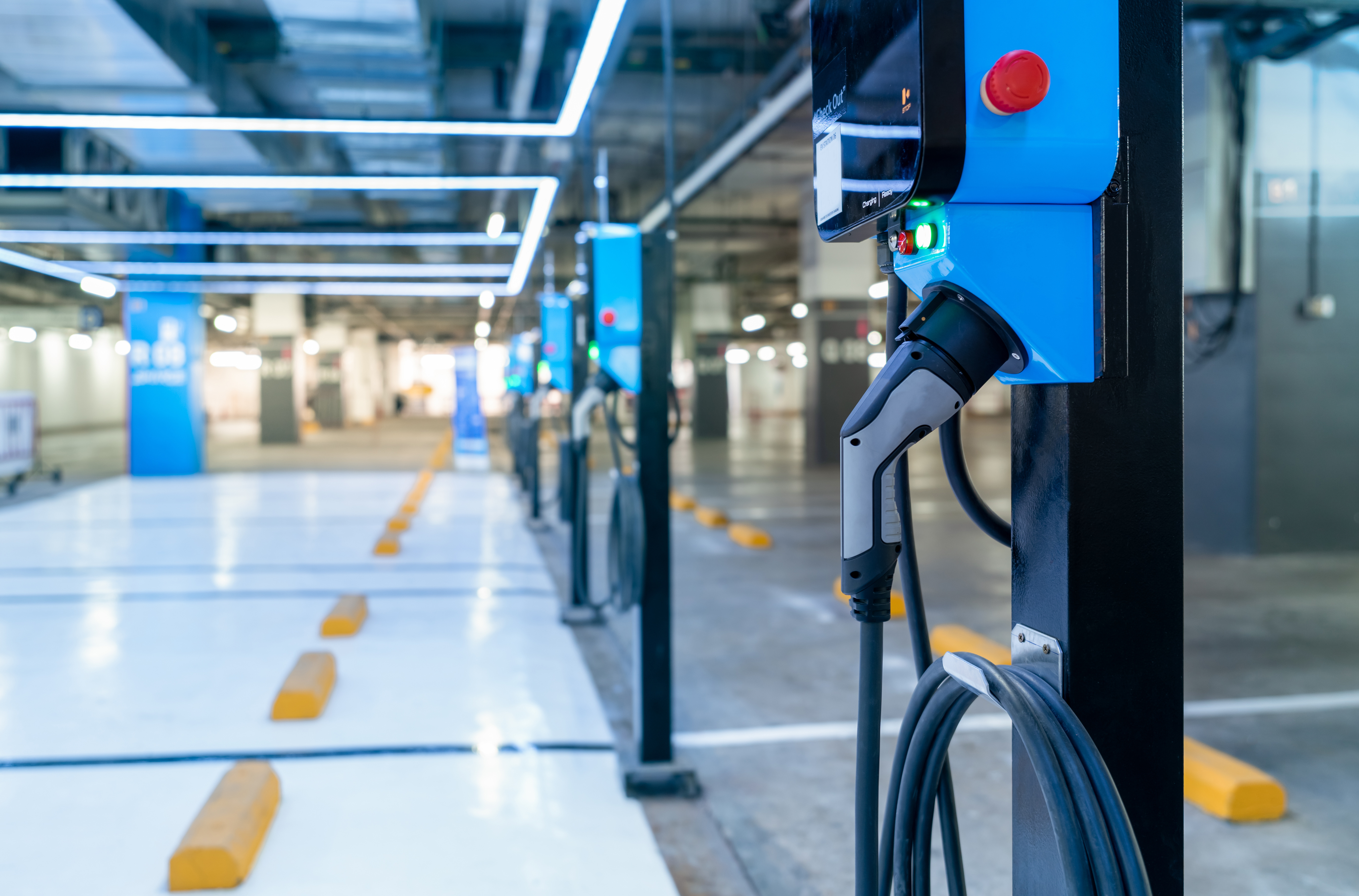
Sol-Ark, a global leader in smart energy solutions with over six generations of hybrid inverters, announced that businesses are decarbonizing, optimizing energy costs, and driving energy resilience with Sol-Ark's Commercial L3 Series LimitLess Lithium. The system is designed to be the most efficient, scalable and cost effective solution to battery energy storage.
A Fortune 50 retailer looking to expand power capacity for Fleet EV Charging Stations at their distribution facility to meet Climate Action Commitments utilized Sol-Ark Commercial Solutions to power the off-grid electrified structures.
"Sol-Ark is deeply committed to helping our customers reach their energy targets and decarbonization goals. Our mission is to democratize energy solutions for businesses, communities, and families," said Tom Brennan, CEO and CTO of Sol-Ark, and a recent EY Entrepreneur of the Year 2023 US National Award Winner.
The L3 Series LimitLess Lithium Battery Energy Storage System, available with native 208V and 480V, includes scalable indoor and outdoor solutions from 40kWh to 9.6MWh. The increased safety features include a built-in aerosol fire suppression system in both the module and the cabinet.
"Pinder Tile, the premier supplier of tile in the Bahamas, was faced with the need to decarbonize and a $258K annual diesel bill to power four forklifts and two delivery trucks that can haul up to three tons. I designed a solution that included three separate 75.8kW EV charging stations, powered by Sol-Ark's L3 Series Battery Energy Storage Systems. The installation was seamless. Pinder Tile is meeting their decarbonization targets and is on track to significantly reduce their energy costs," said Daryl Dejoy, President of Island Energy Storage, and a veteran in renewable energy with over 35 years of experience.
"We consistently choose Sol-Ark inverters and now we are also utilizing Sol-Ark high voltage batteries due to the thoughtful design and seamless integration into commercial installations they provide. With Sol-Ark solutions, we find we have fewer lost production hours, faster code-compliant installations and minimal service calls. Their 7 days a week Tech Support is outstanding. I believe Sol-Ark is the industry standard for current and future solar manufacturers, dealers and installers."
Sol-Ark | https://www.sol-ark.com/
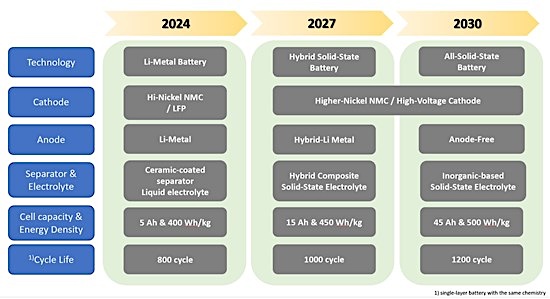
Volt Carbon Technologies Inc. (TSXV: VCT) (OTCQB: TORVF) ("Volt Carbon" or the "Company") is pleased to announce the release of its initial test results for its exclusive Lithium Iron Phosphate battery (LFP) employing its internally developed electrolyte. These batteries were manufactured at Volt Carbon's subsidiary, Solid UltraBattery's ("SUB") facility, situated in Guelph, Ontario. These recent findings mark a significant step forward in Solid UltraBattery's advancement of high-energy LFP technology, as initially outlined in the Company's roadmap which was disclosed to the public on July 24, 2023.
Background
The increasing popularity of Lithium Iron Phosphate (LFP) arises from its cost-effectiveness compared to Lithium Nickel Cobalt Manganese Oxide (NCM), achieved by substituting the NCM cathode with an LFP cathode. Traditionally, a significant drawback has been LFP's limited energy density, impacting the driving range of electric vehicles (EVs). Numerous articles in literature confirm LFP's drawbacks, including a 2023 Forbes Magazine piece titled "Lithium Iron Phosphate Set To Be The Next Big Thing In EV Batteries," which notes a 30-40% lower energy density of LFP compared to NCM, along with the safety advantages of the LFP cathode over NCM in the event of a battery fire. A link to this article can be found at https://www.forbes.com/sites/samabuelsamid/2023/08/16/lithium-iron-phosphate-set-to-be-the-next-big-thing-in-ev-batteries/?sh=340446717515.
Highlights
In response to the energy density limitations of LFP, along with its acknowledged safety advantages over NCM, SUB has been working on a lithium (Li)-metal LFP battery to improve energy density. Management believes they have achieved an industry-leading 280Wh/kg for this cathode type. This technology has the potential to significantly impact battery competitiveness for electric vehicles and battery-powered devices by offering cost-effective alternatives through the removal of nickel and cobalt. Recent testing by SUB demonstrates that LFP/Li-metal battery coin cells have endured 800 cycles while maintaining 78.5% of their capacity (refer to Figure 1), marking a notable milestone in LFP/Li-metal battery technology advancement.
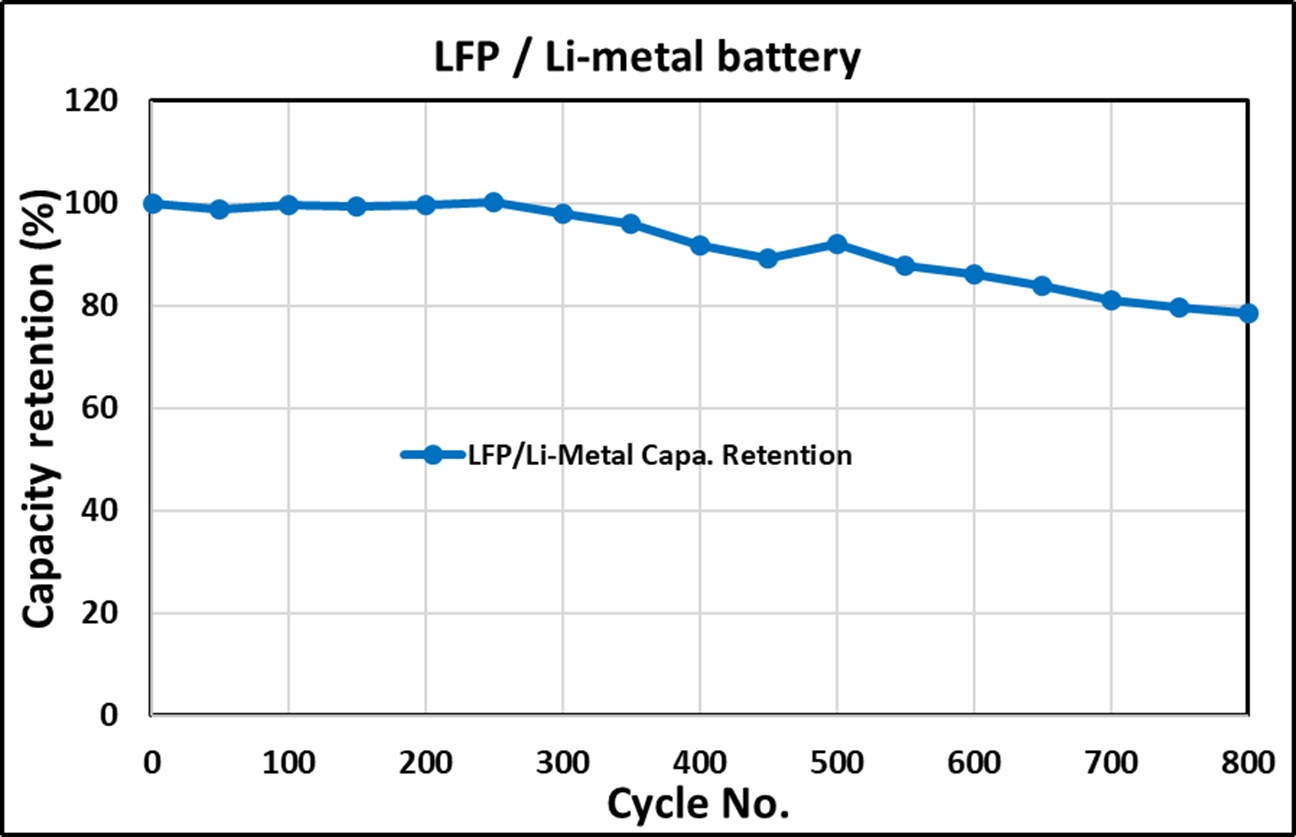
Fig. 1: Li-Metal LFP Coin Cell, Charge/Discharge data, 2.9-3.7V, C/3, 25 °C
Next Steps
These test outcomes reaffirm the Company's goal to surpass 800 cycles and achieve an 80% capacity threshold by the end of 2024 with Lithium (Li)-metal Iron Phosphate battery technologies. Additionally, the Company remains steadfast in following its technology roadmap, initially released on July 24, 2023 (refer to Figure 2 below), which outlines its strategic trajectory for lithium-ion battery product advancement until 2030.
Update on Graphite Development
Since the start of 2024, the Company has enhanced its Guelph prototype battery lab with more fabrication and cycle testing equipment, boosting its capacity to build and test pouch and coin cells. This new equipment will help in development of battery-grade anodes processed from Volt Carbon's Scarborough facility. More test results from the battery anode testing will be published in the coming months.
.jpg)
Fig. 2: Volt Carbon's Product Roadmap
V-Bond Lee, the Company's CEO and President, expressed his satisfaction, stating, "I'm thrilled with these great results; hitting 800 cycles is a new milestone for the Company. Our ongoing investment in talent and equipment is guiding Solid UltraBattery towards an exciting journey in energy storage development. We're fully committed to advancing and bringing our technology to market."
Volt Carbon | www.voltcarbontech.com
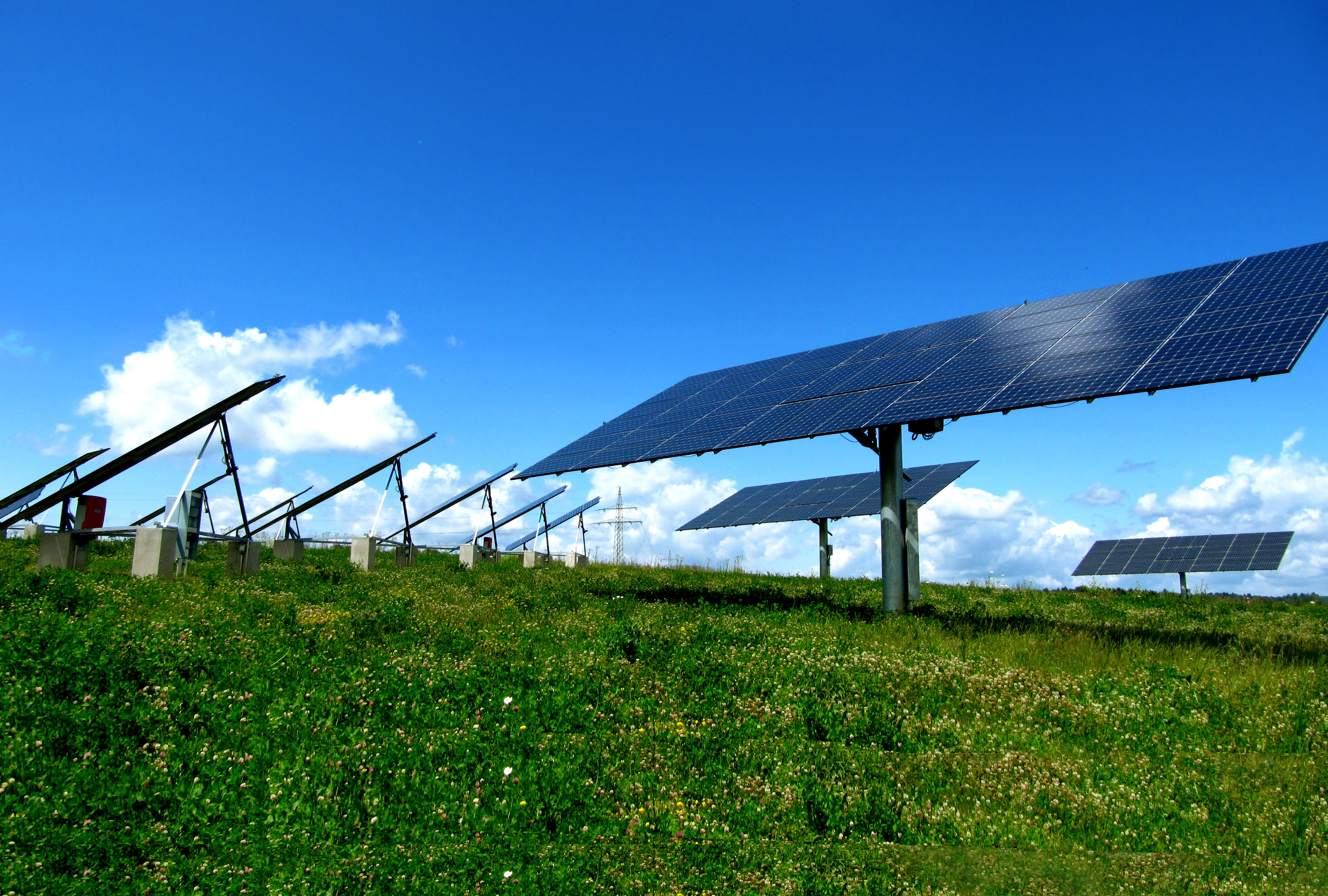
Heliene, Inc. ("Heliene"), one of North America's fastest-growing manufacturers of high-quality solar energy equipment, announced a multiyear module supply agreement and strategic partnership with UGE, (TSXV: UGE) (OTCQB: UGEIF) (the "Company" or "UGE"), a leading community and commercial solar developer.
Through this agreement and partnership, Heliene will help UGE improve project economics and materially reduce supply chain risk with the provision of high-quality U.S.-made solar photovoltaic (PV) modules with U.S.-made cells.
Use of Heliene's modules will help UGE's projects qualify for the Domestic Content Investment Tax Credit (ITC) Bonus under the Inflation Reduction Act of 2022 (IRA). Federal investments made available via the IRA are expected to continue to lower clean energy costs and incentivize U.S. solar project development this decade. As the U.S. seeks to expand its role in the global solar manufacturing market, demand for high-quality, built-to-order modules will also increase. Heliene and UGE's partnership will directly support these efforts by bolstering the U.S. solar supply chain and investing in domestic manufacturing.
With the Heliene supply agreement in place, UGE is projected to begin qualifying for the Domestic Content Tax Credit on projects which start construction as early as this summer. The Domestic Content Credit, paired with other qualifying Investment Tax Credits Bonuses, make a significant positive impact on project economics for UGE and other solar developers. Improved project economics result in more affordable energy for the users of power, from its systems as well as a larger addressable market.
Access to Heliene's domestically-manufactured products and localized supply chains through this agreement will also allow UGE to de-risk its PV module supply, reducing the potential for costly project delays.
"We are proud to partner with UGE to provide peace of mind through material that derisks supply of PV modules and helps expand the use of Heliene's American-made, high-quality, and reliable solar technologies," said Martin Pochtaruk, CEO at Heliene. "We are excited to collaborate with a like-minded company that has been our client for over a decade, now supplying U.S.-made modules with U.S.-made cells; we all look forward to this multiyear agreement with an already long-term partner."
UGE, with a mission to make renewable energy accessible and affordable for all, is focused on strengthening energy equity and grid resilience by developing its projects primarily in low-to moderate-income communities and those most adversely affected by the transition away from the fossil fuel economy.
"We are thrilled about our partnership with Heliene, which will provide us with a reliable source of high-quality modules and support the critical need for growth in domestic solar manufacturing," said Nick Blitterswyk, UGE's Founder and CEO. "Perhaps most exciting for us, this partnership will help us qualify for Domestic Content Tax Credits, improving our project economics so we can expand our impact by developing more renewable energy projects for the communities we serve."
Heliene | www.heliene.com
UGE | https://ugei.com/
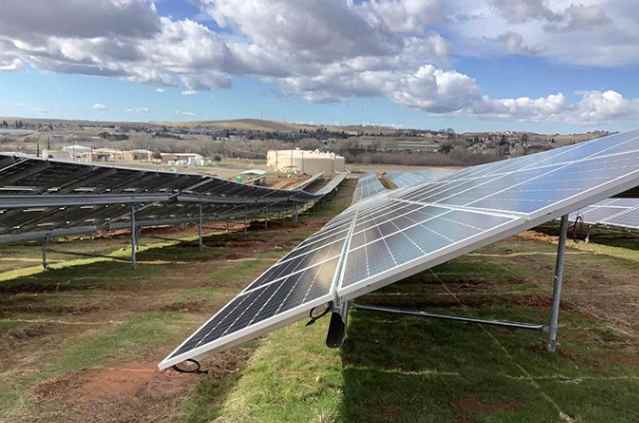
Vesper Energy, a developer, owner, and operator of utility-scale renewable energy assets, announced the sale of its Deer Creek Renewable Energy project to a leading Fortune 500 energy company. Deer Creek Renewable Energy is a solar and storage project located on 378 acres in Tulare County, California with a potential generating capacity of up to 50 MWac solar and up to 50 MW of energy storage capacity.
"We are excited about the sale of the Deer Creek Renewable Energy project, which showcases Vesper Energy's strong growth and development portfolio in key renewable energy markets like California," said Mark Rostafin, Co-Chief Executive Officer at Vesper Energy. "We look forward to building on this momentum as we enter a new phase of growth."
The Deer Creek Renewable Energy project sale supports Vesper's mission to use technology and strategic partnerships to advance clean energy infrastructure across the U.S. Vesper Energy has two additional projects currently in development in Tulare County, underscoring the organization's commitment to the area's clean energy transition and alignment to California's goal to establish 100% zero-carbon energy planning by 2045. Today, Vesper Energy's development pipeline in California represents approximately 1750 MW of solar and energy storage projects.
Vesper Energy | https://vesperenergy.com/
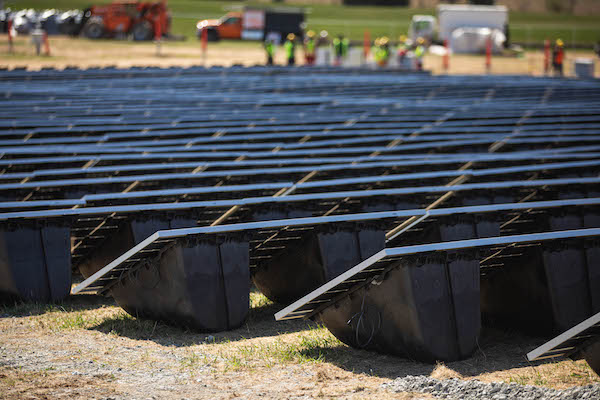
Alternative Energies May 15, 2023
The United States is slow to anger, but relentlessly seeks victory once it enters a struggle, throwing all its resources into the conflict. “When we go to war, we should have a purpose that our people understand and support,” as former Secretary ....

Unleashing trillions of dollars for a resilient energy future is within our grasp — if we can successfully navigate investment risk and project uncertainties.
The money is there — so where are the projects?
A cleaner and more secure energy future will depend on tapping trillions of dollars of capital. The need to mobilize money and markets to enable the energy transition was one of the key findings of one of the largest studies ever conducted among the global energy sector C-suite. This will mean finding ways to reduce the barriers and uncertainties that prevent money from flowing into the projects and technologies that will transform the energy system. It will also mean fostering greater collaboration and alignment among key players in the energy space.
 Interestingly, the study found that insufficient access to finance was not considered the primary cause of the current global energy crisis. In fact, capital was seen to be available — but not being unlocked. Why is that? The answer lies in the differing risk profiles of energy transition investments around the world. These risks manifest in multiple ways, including uncertainties relating to project planning, public education, stakeholder engagement, permitting, approvals, policy at national and local levels, funding and incentives, technology availability, and supply chains.
Interestingly, the study found that insufficient access to finance was not considered the primary cause of the current global energy crisis. In fact, capital was seen to be available — but not being unlocked. Why is that? The answer lies in the differing risk profiles of energy transition investments around the world. These risks manifest in multiple ways, including uncertainties relating to project planning, public education, stakeholder engagement, permitting, approvals, policy at national and local levels, funding and incentives, technology availability, and supply chains.
These risks need to be addressed to create more appealing investment opportunities for both public and private sector funders. This will require smart policy and regulatory frameworks that drive returns from long-term investment into energy infrastructure. It will also require investors to recognize that resilient energy infrastructure is more than an ESG play — it is a smart investment in the context of doing business in the 21st century.
Make de-risking investment profiles a number one priority
According to the study, 80 percent of respondents believe the lack of capital being deployed to accelerate the transition is the primary barrier to building the infrastructure required to improve energy security. At the same time, investors are looking for opportunities to invest in infrastructure that meets ESG and sustainability criteria. This suggests an imbalance between the supply and demand of capital for energy transition projects.
How can we close the gap?
One way is to link investors directly to energy companies. Not only would this enable true collaboration and non-traditional partnerships, but it would change the way project financing is conceived and structured — ultimately aiding in potentially satisfying the risk appetite of latent but hugely influential investors, such as pension funds. The current mismatch of investor appetite and investable projects reveals a need for improving risk profiles, as well as a mindset shift towards how we bring investment and developer stakeholders together for mutual benefit. The circular dilemma remains: one sector is looking for capital to undertake projects within their skill to deploy, while another sector wonders where the investable projects are.
This conflict is being played out around the world; promising project announcements are made, only to be followed by slow progress (or no action at all). This inertia results when risks are compounded and poorly understood. To encourage collaboration between project developers and investors with an ESG focus, more attractive investment opportunities can be created by pulling several levers: public and private investment strategies, green bonds and other sustainable finance instruments, and innovative financing models such as impact investing.

Expedite permitting to speed the adoption of new technologies
Another effective strategy to de-risk investment profiles is found in leveraging new technologies and approaches that reduce costs, increase efficiency, and enhance the reliability of energy supply. Research shows that 62 percent of respondents indicated a moderate or significant increase in investment in new and transitional technologies respectively, highlighting the growing interest in innovative solutions to drive the energy transition forward.
Hydrogen, carbon capture and storage, large-scale energy storage, and smart grids are some of the emerging technologies identified by survey respondents as having the greatest potential to transform the energy system and create new investment opportunities. However, these technologies face challenges such as long lag times between conception and implementation.
If the regulatory environment makes sense, then policy uncertainty is reduced, and the all-important permitting pathways are well understood and can be navigated. Currently, the lack of clear, timely, and fit-for-purpose permitting is a major roadblock to the energy transition. To truly unleash the potential of transitional technologies requires the acceleration of regulatory systems that better respond to the nuance and complexity of such technologies (rather than the current one-size-fits all approach). In addition, permitting processes must also be expedited to dramatically decrease the period between innovation, commercialization, and implementation. One of the key elements of faster permitting is effective consultation with stakeholders and engagement with communities where these projects will be housed for decades. This is a highly complex area that requires both technical and communication skills.
The power of collaboration, consistency, and systems thinking
The report also reveals the need for greater collaboration among companies in the energy space to build a more resilient system. The report shows that, in achieving net zero, there is a near-equal split between those increasing investment (47 percent of respondents), and those decreasing investment (39 percent of respondents). This illustrates the complexity and diversity of the system around the world. A more resilient system will require all its components – goals and actions – to be aligned towards a common outcome.
Another way to de-risk the energy transition is to establish consistent, transparent, and supportive policy frameworks that encourage investment and drive technological innovation. The energy transition depends on policy to guide its direction and speed by affecting how investors feel and how the markets behave. However, inconsistent or inadequate policy can also be a source of uncertainty and instability. For example, shifting political priorities, conflicting international standards, and the lack of market-based mechanisms can hinder the deployment of sustainable technologies, resulting in a reluctance to commit resources to long-term projects.
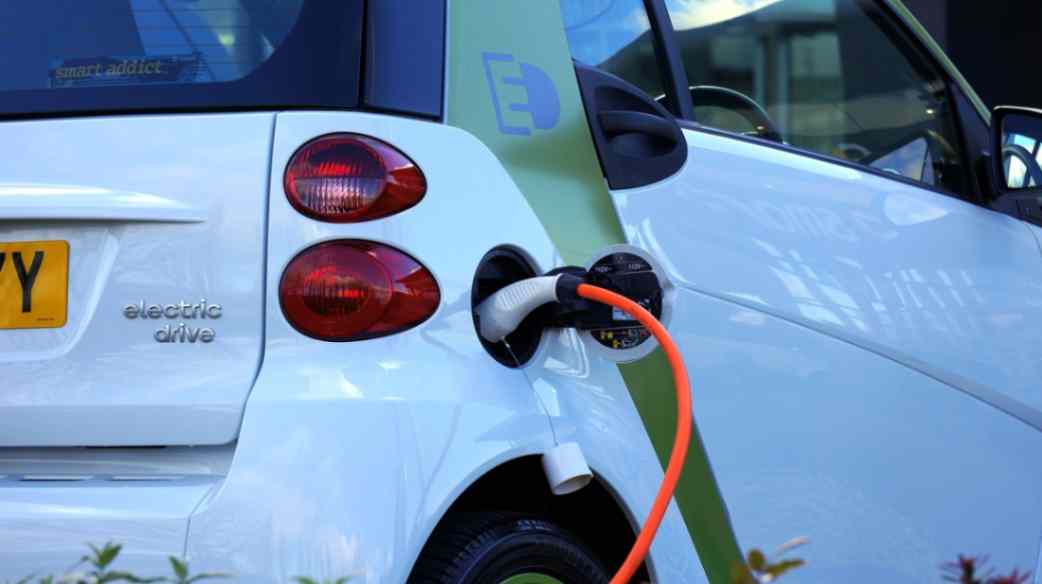
Variations in country-to-country deployment creates disparities in energy transition progress. For instance, the 2022 Inflation Reduction Act in the US has posed challenges for the rest of the world, by potentially channeling energy transition investment away from other markets and into the US. This highlights the need for a globally unified approach to energy policy that balances various national interests while addressing a global problem.
To facilitate the energy transition, it is imperative to establish stable, cohesive, and forward-looking policies that align with global goals and standards. By harmonizing international standards, and providing clear and consistent signals, governments and policymakers can generate investor confidence, helping to foster a robust energy ecosystem that propels the sector forward.
Furthermore, substantive and far-reaching discussions at international events like the United Nations Conference of the Parties (COP), are essential to facilitate this global alignment. These events provide an opportunity to de-risk the energy transition through consistent policy that enables countries to work together, ensuring that the global community can tackle the challenges and opportunities of the energy transition as a united front.
Keeping net-zero ambitions on track
Despite the challenges faced by the energy sector, the latest research reveals a key positive: 91 percent of energy leaders surveyed are working towards achieving net zero. This demonstrates a strong commitment to the transition and clear recognition of its importance. It also emphasizes the need to accelerate our efforts, streamline processes, and reduce barriers to realizing net-zero ambitions — and further underscores the need to de-risk energy transition investment by removing uncertainties.
The solution is collaborating and harmonizing our goals with the main players in the energy sector across the private and public sectors, while establishing consistent, transparent, and supportive policy frameworks that encourage investment and drive technological innovation.
These tasks, while daunting, are achievable. They require vision, leadership, and action from all stakeholders involved. By adopting a new mindset about how we participate in the energy system and what our obligations are, we can stimulate the rapid progress needed on the road to net zero.
Dr. Tej Gidda (Ph.D., M.Sc., BSc Eng) is an educator and engineer with over 20 years of experience in the energy and environmental fields. As GHD Global Leader – Future Energy, Tej is passionate about moving society along the path towards a future of secure, reliable, and affordable low-carbon energy. His focus is on helping public and private sector clients set and deliver on decarbonization goals in order to achieve long-lasting positive change for customers, communities, and the climate. Tej enjoys fostering the next generation of clean energy champions as an Adjunct Professor at the University of Waterloo Department of Civil and Environmental Engineering.
GHD | www.ghd.com
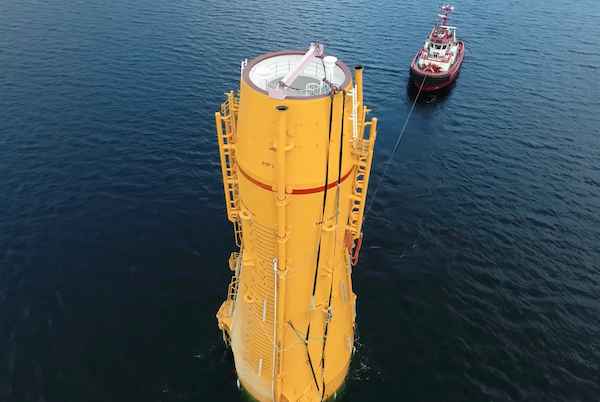
The Kincardine floating wind farm, located off the east coast of Scotland, was a landmark development: the first commercial-scale project of its kind in the UK sector. Therefore, it has been closely watched by the industry throughout its installation. With two of the turbines now having gone through heavy maintenance, it has also provided valuable lessons into the O&M processes of floating wind projects.
In late May, the second floating wind turbine from the five-turbine development arrived in the port of Massvlakte, Rotterdam, for maintenance. An Anchor Handling Tug Supply (AHTS)
vessel was used to deliver the KIN-02 turbine two weeks after a Platform Supply Vessel (PSV) and AHTS had worked to disconnect the turbine from the wind farm site. The towing vessel became the third vessel used in the operation.
This is not the first turbine disconnected from the site and towed for maintenance. In the summer of 2022, KIN-03 became the world’s first-ever floating wind turbine that required heavy maintenance (i.e. being disconnected and towed for repair). It was also towed from Scotland to Massvlakte.
Each of these operations has provided valuable lessons for the ever-watchful industry in how to navigate the complexities of heavy maintenance in floating wind as the market segment grows.

The heavy maintenance process
When one of Kincardine’s five floating 9.5 MW turbines (KIN-03) suffered a technical failure in May 2022, a major technical component needed to be replaced. The heavy maintenance strategy selected by the developer and the offshore contractors consisted in disconnecting and towing the turbine and its floater to Rotterdam for maintenance, followed by a return tow and re-connection. All of the infrastructure, such as crane and tower access, remained at the quay following the construction phase. (Note, the following analysis only covers KIN-03, as details of the second turbine operation are not yet available).
Comparing the net vessel days for both the maintenance and the installation campaigns at this project highlights how using a dedicated marine spread can positively impact operations.
For this first-ever operation, a total of 17.2 net vessel days were required during turbine reconnection—only a slight increase on the 14.6 net vessel days that were required for the first hook-up operation performed during the initial installation in 2021. However, it exceeds the average of eight net vessel days during installation. The marine spread used in the heavy maintenance operation differed from that used during installation. Due to this, it did not benefit from the learning curve and experience gained throughout the initial installation, which ultimately led to the lower average vessel days.
The array cable re-connection operation encountered a similar effect. The process was performed by one AHTS that spent 10 net vessel days on the operation. This compares to the installation campaign, where the array cable second-end pull-in lasted a maximum of 23.7 hours using a cable layer.
Overall, the turbine shutdown duration can be broken up as 14 days at the quay for maintenance, 52 days from turbine disconnection to turbine reconnection, and 94 days from disconnection to the end of post-reconnection activities.
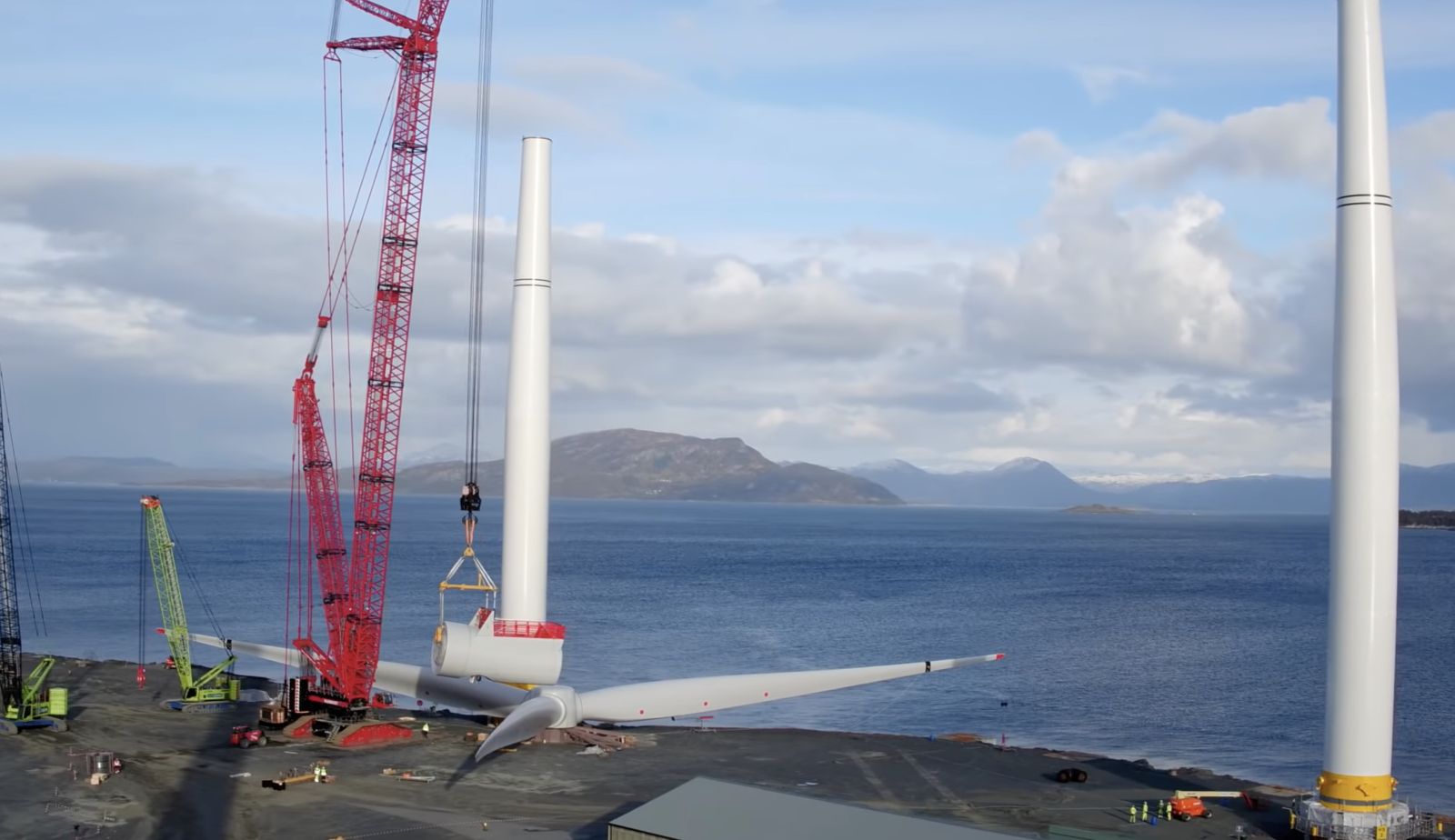
What developers should keep in mind for heavy maintenance operations
This analysis has uncovered two main lessons developers should consider when planning a floating wind project: the need to identify an appropriate O&M port, and to guarantee that a secure fleet is available.
Floating wind O&M operations require a port with both sufficient room and a deep-water quay. The port must also be equipped with a heavy crane with sufficient tip height to accommodate large floaters and reach turbine elevation. Distance to the wind farm should also be taken into account, as shorter distances will reduce towing time and, therefore, minimize transit and non-productive turbine time.
During the heavy maintenance period for KIN-03 and KIN-02, the selected quay (which had also been utilized in the initial installation phase of the wind farm project), was already busy as a marshalling area for other North Sea projects. This complicated the schedule significantly, as the availability of the quay and its facilities had to be navigated alongside these other projects. This highlights the importance of abundant quay availability both for installation (long-term planning) and maintenance that may be needed on short notice.
At the time of the first turbine’s maintenance program (June 2022), the North Sea AHTS market was in an exceptional situation: the largest bollard pull AHTS units contracted at over $200,000 a day, the highest rate in over a decade.
During this time, the spot market was close to selling out due to medium-term commitments, alongside the demand for high bollard pull vessels for the installation phase at a Norwegian floating wind farm project. The Norwegian project required the use of four AHTS above a 200t bollard pull. With spot rates ranging from $63,000 to $210,000 for the vessels contracted for Kincardine’s maintenance, the total cost of the marine spread used in the first repair campaign was more than $4 million.
Developers should therefore consider the need to structure maintenance contracts with AHTS companies, either through frame agreements or long-term charters, to decrease their exposure to spot market day rates as the market tightens in the future.

While these lessons are relevant for floating wind developers now, new players are looking towards alternative heavy O&M maintenance options for the future. Two crane concepts are especially relevant in this instance. The first method is for a crane to be included in the turbine nacelle to be able to directly lift the component which requires repair from the floater, as is currently seen on onshore turbines. This method is already employed in onshore turbines and could be applicable for offshore. The second method is self-elevating cranes with several such solutions already in development.
The heavy maintenance operations conducted on floating turbines at the Kincardine wind farm have provided invaluable insights for industry players, especially developers. The complex process of disconnecting and towing turbines for repairs highlights the need for meticulous planning and exploration of alternative maintenance strategies, some of which are already in the pipeline. As the industry evolves, careful consideration of ports, and securing fleet contracts, will be crucial in driving efficient and cost-effective O&M practices for the floating wind market.
Sarah McLean is Market Research Analyst at Spinergie, a maritime technology company specializing in emission, vessel performance, and operation optimization.
Spinergie | www.spinergie.com
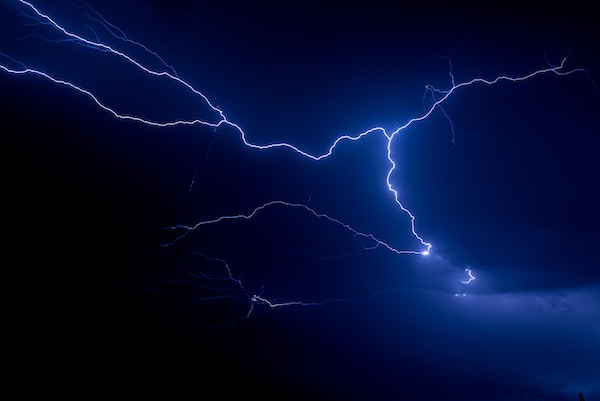
According to the Energy Information Administration (EIA), developers plan to add 54.5 gigawatts (GW) of new utility-scale electric generating capacity to the U.S. power grid in 2023. More than half of this capacity will be solar. Wind power and battery storage are expected to account for roughly 11 percent and 17 percent, respectively.
A large percentage of new installations are being developed in areas that are prone to extreme weather events and natural disasters (e.g., Texas and California), including high wind, tornadoes, hail, flooding, earthquakes, wildfires, etc. With the frequency and severity of many of these events increasing, project developers, asset owners, and tax equity partners are under growing pressure to better understand and mitigate risk.
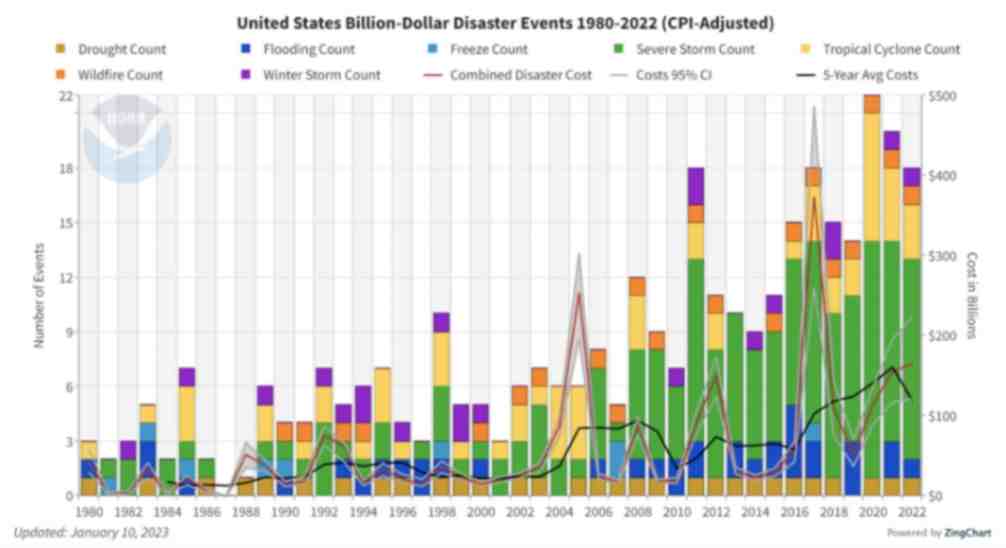
Figure 1. The history of billion-dollar disasters in the United States each year from 1980 to 2022 (source: NOAA)
In terms of loss prevention, a Catastrophe (CAT) Modeling Study is the first step to understanding the exposure and potential financial loss from natural hazards or extreme weather events. CAT studies form the foundation for wider risk management strategies, and have significant implications for insurance costs and coverage.
Despite their importance, developers often view these studies as little more than a formality required for project financing. As a result, they are often conducted late in the development cycle, typically after a site has been selected. However, a strong case can be made for engaging early with an independent third party to perform a more rigorous site-specific technical assessment. Doing so can provide several advantages over traditional assessments conducted by insurance brokerage affiliates, who may not possess the specialty expertise or technical understanding needed to properly apply models or interpret the results they generate. One notable advantage of early-stage catastrophe studies is to help ensure that the range of insurance costs, which can vary from year to year with market forces, are adequately incorporated into the project financial projections.
The evolving threat of natural disasters
Over the past decade, the financial impact of natural hazard events globally has been almost three trillion dollars. In the U.S. alone, the 10-year average annual cost of natural disaster events exceeding $1 billion increased more than fourfold between the 1980s ($18.4 billion) and the 2010s ($84.5 billion).

Investors, insurers, and financiers of renewable projects have taken notice of this trend, and are subsequently adapting their behavior and standards accordingly. In the solar market, for example, insurance premiums increased roughly four-fold from 2019 to 2021. The impetus for this increase can largely be traced back to a severe storm in Texas in 2019, which resulted in an $80 million loss on 13,000 solar panels that were damaged by hail.
The event awakened the industry to the hazards severe storms present, particularly when it comes to large-scale solar arrays. Since then, the impact of convective weather on existing and planned installations has been more thoroughly evaluated during the underwriting process. However, far less attention has been given to the potential for other natural disasters; events like floods and earthquakes have not yet resulted in large losses and/or claims on renewable projects (including wind farms). The extraordinary and widespread effect of the recent Canadian wildfires may alter this behavior moving forward.
A thorough assessment, starting with a CAT study, is key to quantifying the probability of their occurrence — and estimating potential losses — so that appropriate measures can be taken to mitigate risk.
All models are not created equal
Industrywide, certain misconceptions persist around the use of CAT models to estimate losses from an extreme weather event or natural disaster.
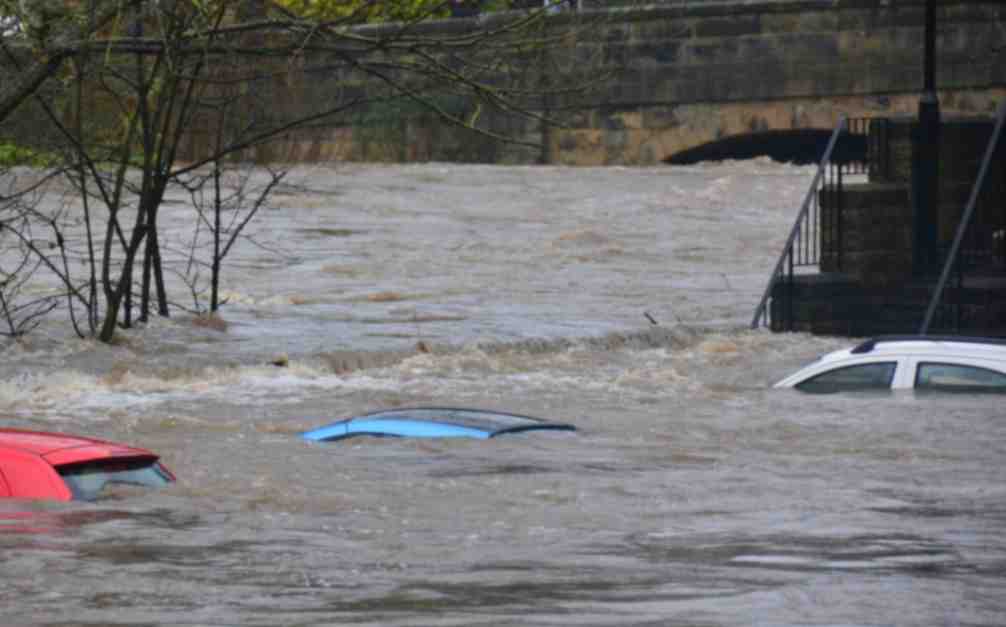
Often, the perception is that risk assessors only need a handful of model inputs to arrive at an accurate figure, with the geographic location being the most important variable. While it’s true that many practitioners running models will pre-specify certain project characteristics regardless of the asset’s design (for example, the use of steel moment frames without trackers for all solar arrays in a given region or state), failure to account for even minor details can lead to loss estimates that are off by multiple orders of magnitude.
The evaluation process has recently become even more complex with the addition of battery energy storage. Relative to standalone solar and wind farms, very little real-world experience and data on the impact of extreme weather events has been accrued on these large-scale storage installations. Such projects require an even greater level of granularity to help ensure that all risks are identified and addressed.
Even when the most advanced modeling software tools are used (which allow for thousands of lines of inputs), there is still a great deal that is subject to interpretation. If the practitioner does not possess the expertise or technical ability needed to understand the model, the margin for error can increase substantially. Ultimately, this can lead to overpaying for insurance. Worse, you may end up with a policy with insufficient coverage. In both cases, the profitability of the asset is impacted.
Supplementing CAT studies
In certain instances, it may be necessary to supplement CAT models with an even more detailed analysis of the individual property, equipment, policies, and procedures. In this way, an unbundled risk assessment can be developed that is tailored to the project. Supplemental information (site-specific wind speed studies and hydrological studies, structural assessment, flood maps, etc.) can be considered to adjust vulnerability models.
This provides an added layer of assurance that goes beyond the pre-defined asset descriptions in the software used by traditional studies or assessments. By leveraging expert elicitations, onsite investigations, and rigorous engineering-based methods, it is possible to discretely evaluate asset-specific components as part of the typical financial loss estimate study: this includes Normal Expected Loss (NEL), also known as Scenario Expected Loss (SEL); Probable Maximum Loss (PML), also known as Scenario Upper Loss (SUL); and Probabilistic Loss (PL).
Understanding the specific vulnerabilities and consequences can afford project stakeholders unique insights into quantifying and prioritizing risks, as well as identifying proper mitigation recommendations.
Every project is unique
The increasing frequency and severity of natural disasters and extreme weather events globally is placing an added burden on the renewable industry, especially when it comes to project risk assessment and mitigation. Insurers have signaled that insurance may no longer be the main basis for transferring risk; traditional risk management, as well as site and technology selection, must be considered by developers, purchasers, and financiers.
As one of the first steps in understanding exposure and the potential capital loss from a given event, CAT studies are becoming an increasingly important piece of the risk management puzzle. Developers should treat them as such by engaging early in the project lifecycle with an independent third-party practitioner with the specialty knowledge, tools, and expertise to properly interpret models and quantify risk.
Hazards and potential losses can vary significantly depending on the project design and the specific location. Every asset should be evaluated rigorously and thoroughly to minimize the margin for error, and maximize profitability over its life.
 Chris LeBoeuf is Global Head of the Extreme Loads and Structural Risk division of ABS Group, based in San Antonio, Texas. He leads a team of more than 60 engineers and scientists in the US, UK, and Singapore, specializing in management of risks to structures and equipment related to extreme loading events, including wind, flood, seismic and blast. Chris has more than 20 years of professional experience as an engineering consultant, and is a recognized expert in the study of blast effects and blast analysis, as well as design of buildings. He holds a Bachelor of Science in Civil Engineering from The University of Texas at San Antonio, and is a registered Professional Engineer in 12 states.
Chris LeBoeuf is Global Head of the Extreme Loads and Structural Risk division of ABS Group, based in San Antonio, Texas. He leads a team of more than 60 engineers and scientists in the US, UK, and Singapore, specializing in management of risks to structures and equipment related to extreme loading events, including wind, flood, seismic and blast. Chris has more than 20 years of professional experience as an engineering consultant, and is a recognized expert in the study of blast effects and blast analysis, as well as design of buildings. He holds a Bachelor of Science in Civil Engineering from The University of Texas at San Antonio, and is a registered Professional Engineer in 12 states.
ABS Group | www.abs-group.com
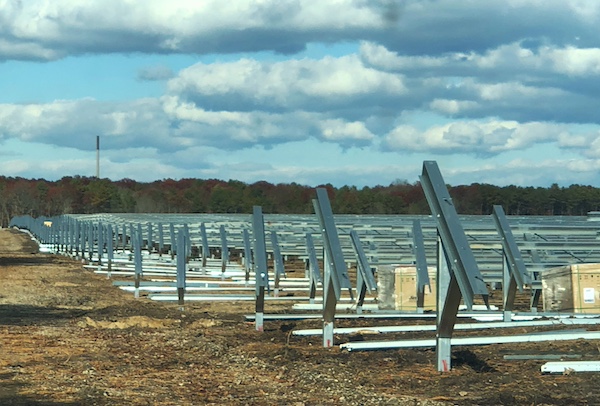
Throughout my life and career as a real estate developer in New York City, I’ve had many successes. In what is clearly one of my most unusual development projects in a long career filled with them, I initiated the building of a solar farm to help t....
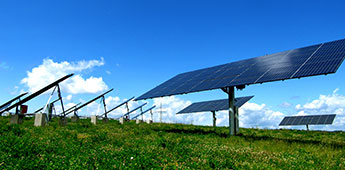
I’m just going to say it, BIPV is dumb. Hear me out…. Solar is the most affordable form of energy that has ever existed on the planet, but only because the industry has been working towards it for the past 15 years. Governments,....
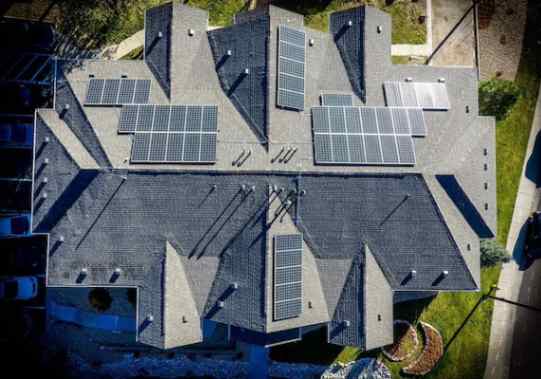
Heat waves encircled much of the earth last year, pushing temperatures to their highest in recorded history. The water around Florida was “hot-tub hot” — topping 101° and bleaching and killing coral in waters around the peninsula. Phoenix had ....
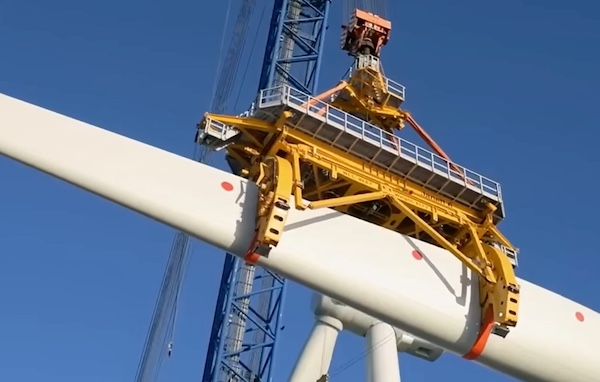
Wind turbines play a pivotal role in the global transition to sustainable energy sources. However, the harsh environmental conditions in which wind turbines operate, such as extreme temperatures, high humidity, and exposure to various contaminants, p....
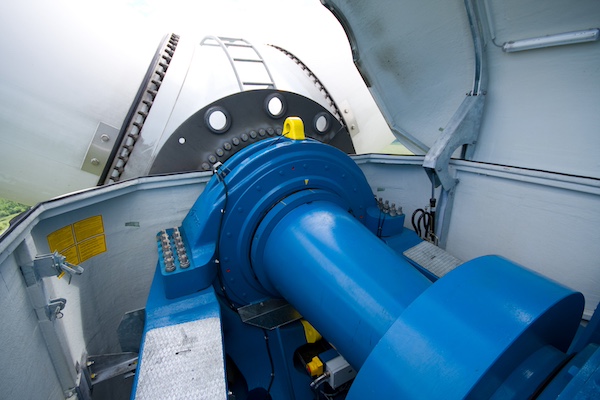
Wind energy remains the leading non-hydro renewable technology, and one of the fastest-growing of all power generation technologies. The key to making wind even more competitive is maximizing energy production and efficiently maintaining the assets. ....
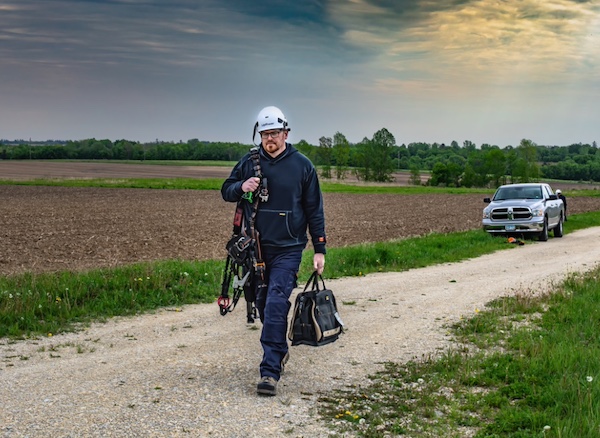
The allure of wind turbines is undeniable. For those fortunate enough to visit these engineering marvels, it’s an experience filled with awe and learning. However, the magnificence of these structures comes with inherent risks, making safety an abs....
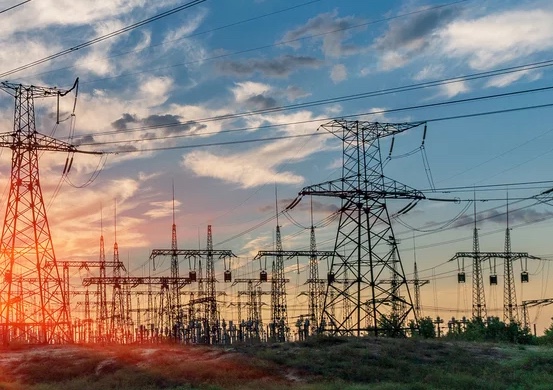
Battery energy storage is a critical technology to reducing our dependence on fossil fuels and build a low carbon future. Renewable energy generation is fundamentally different from traditional fossil fuel energy generation in that energy cannot be p....
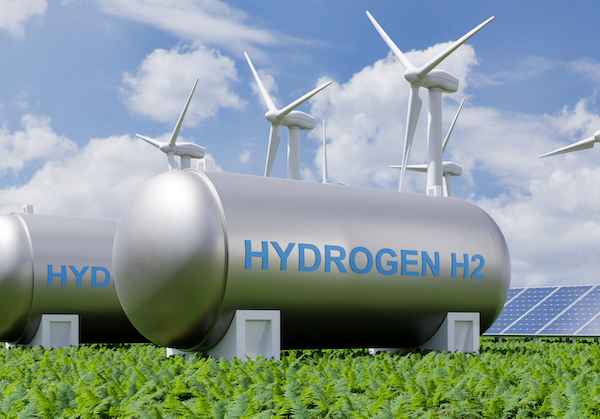
Not enough people know that hydrogen fuel cells are a zero-emission energy technology. Even fewer know water vapor's outsized role in electrochemical processes and reactions. Producing electricity through a clean electrochemical process with water....

In the ever-evolving landscape of sustainable transportation, a ground-breaking shift is here: 2024 ushers in a revolutionary change in Electric Vehicle (EV) tax credits in the United States. Under the Inflation Reduction Act (IRA), a transforma....

Now more than ever, it would be difficult to overstate the importance of the renewable energy industry. Indeed, it seems that few other industries depend as heavily on constant and rapid innovation. This industry, however, is somewhat unique in its e....

University of Toronto’s latest student residence welcomes the future of living with spaces that are warmed by laptops and shower water. In September 2023, one of North America’s largest residential passive homes, Harmony Commons, located....
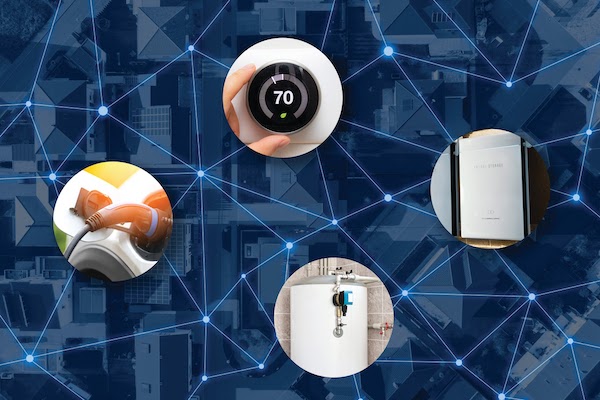
For decades, demand response (DR) has proven a tried-and-true conservation tactic to mitigate energy usage during peak demand hours. Historically, those peak demand hours were relatively predictable, with increases in demand paralleling commuter and ....